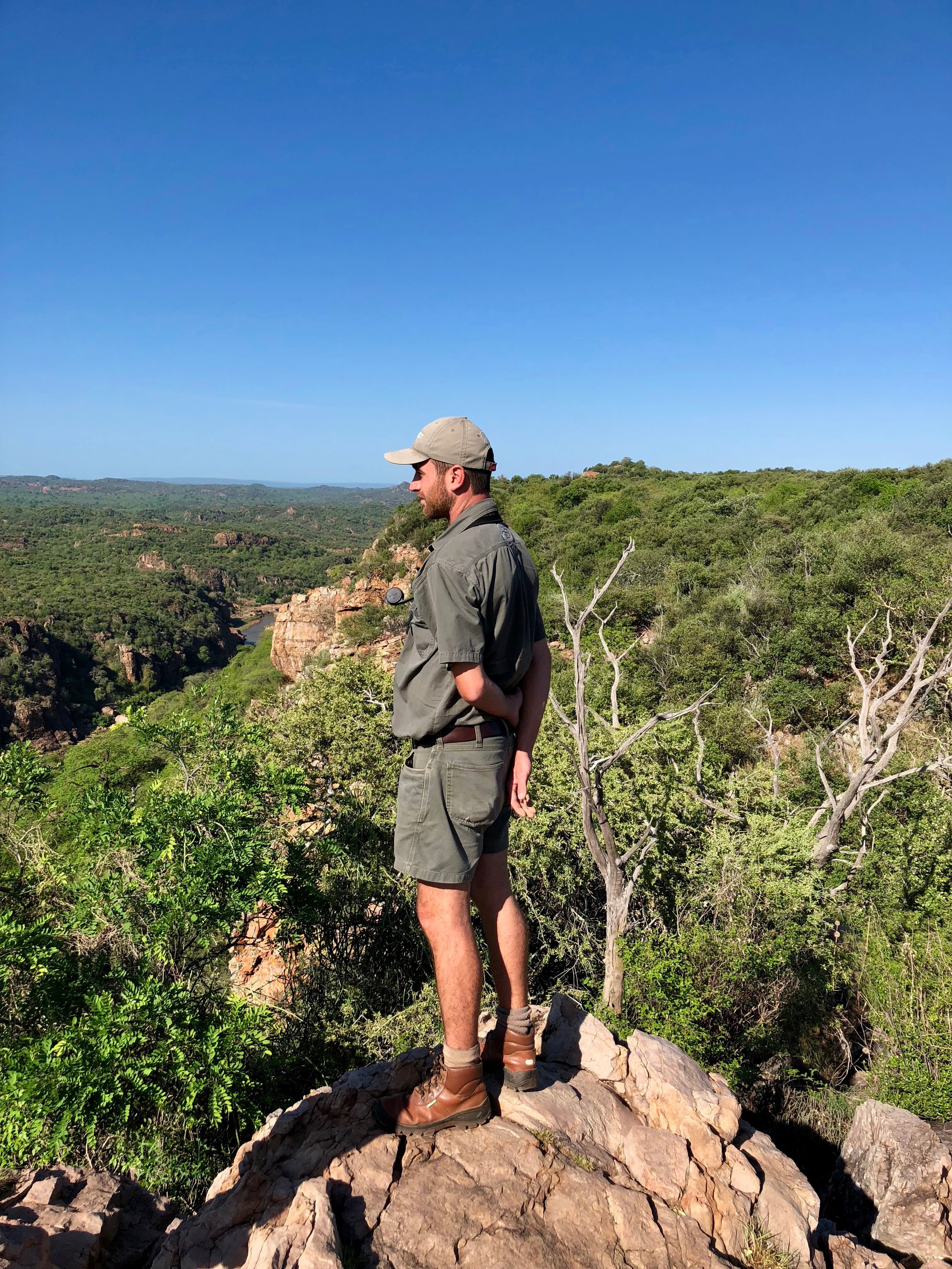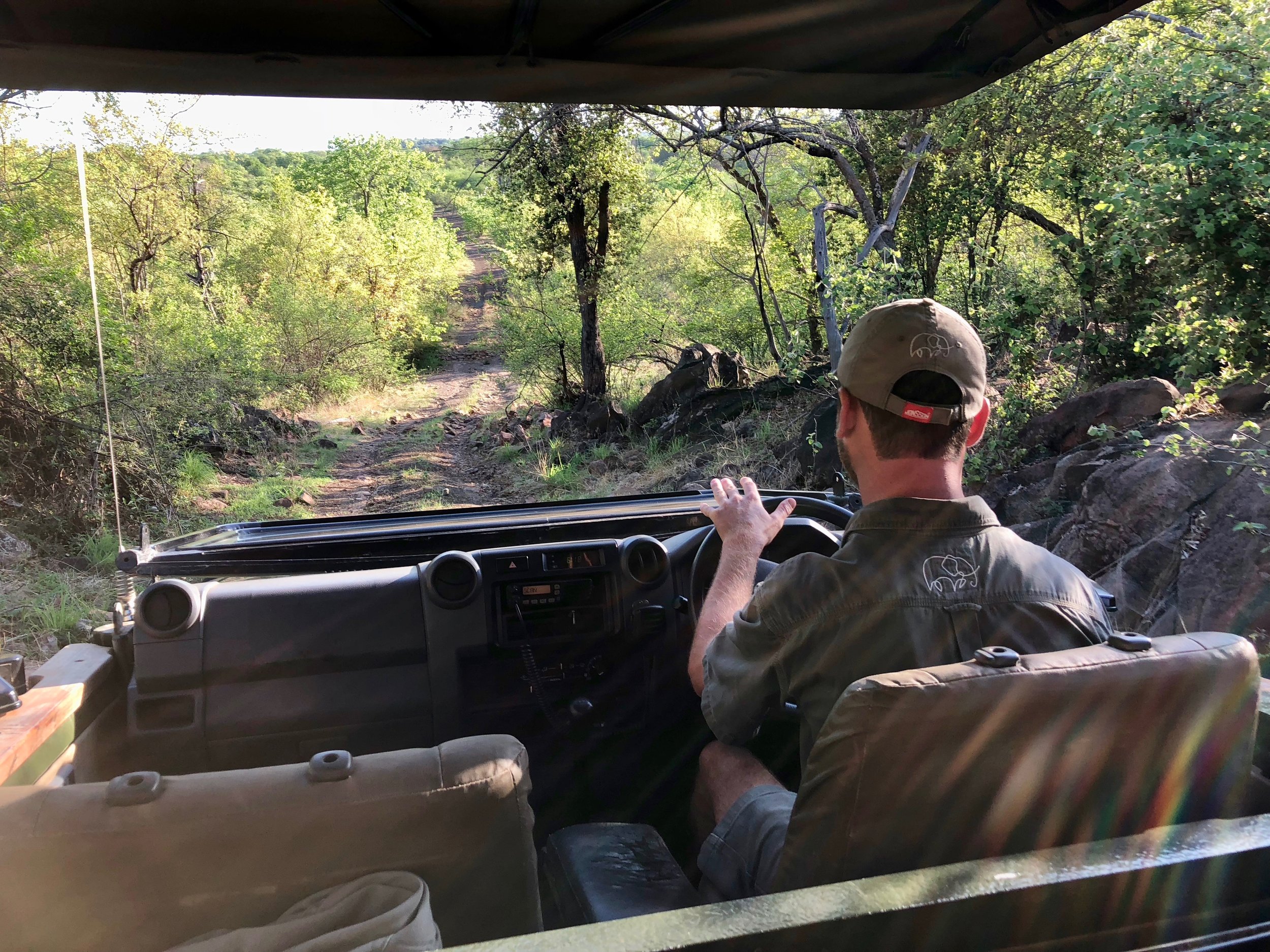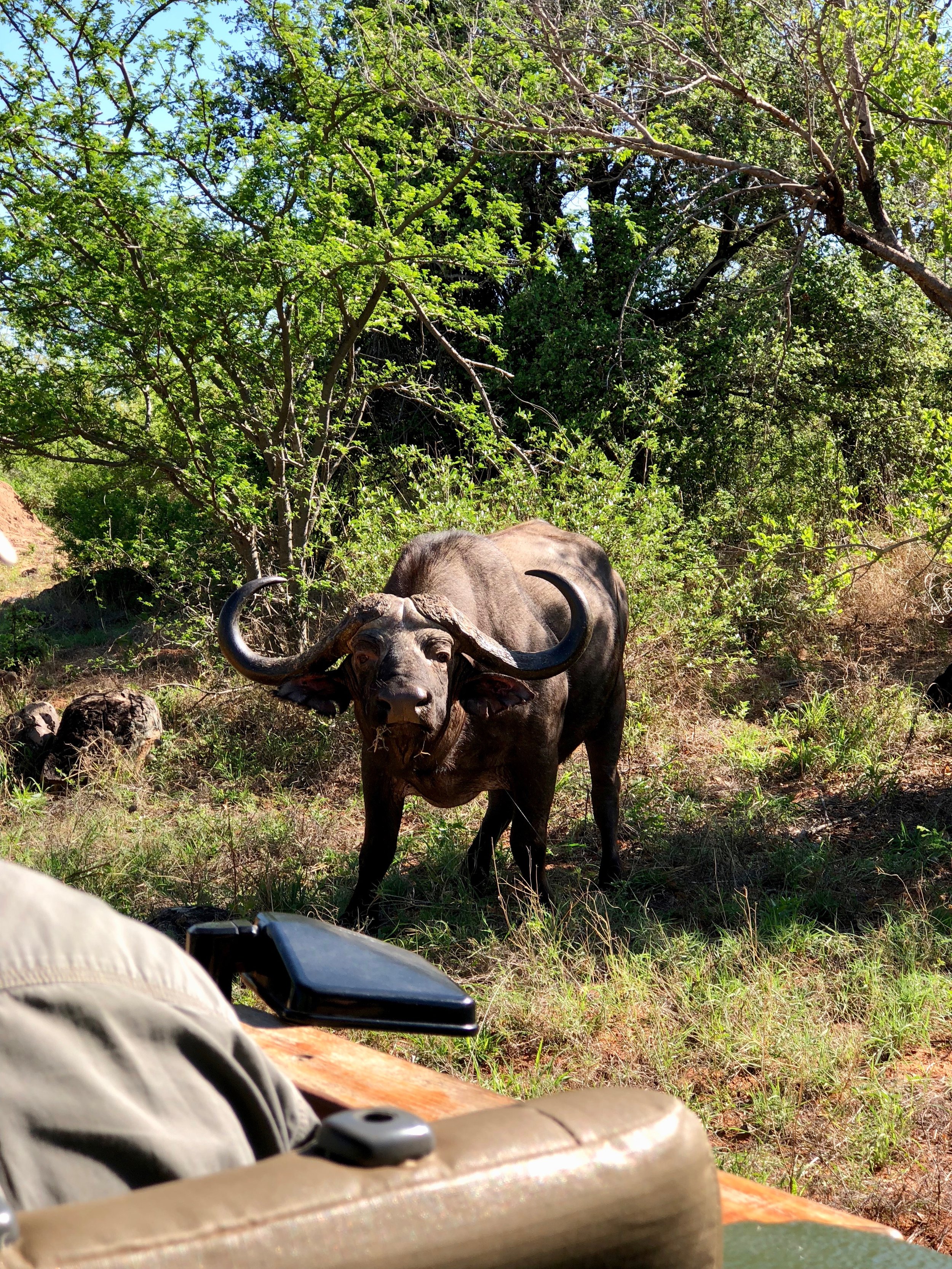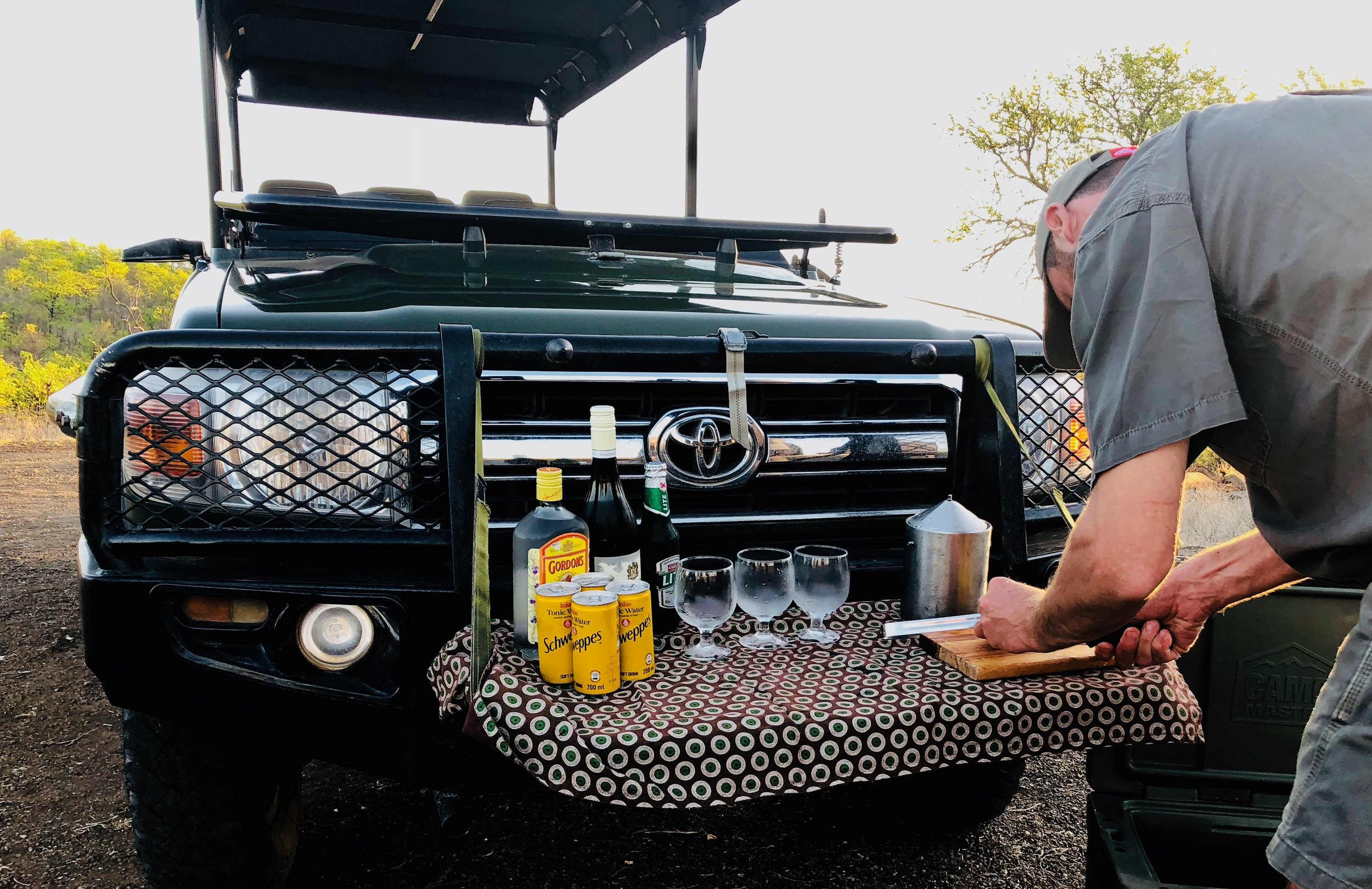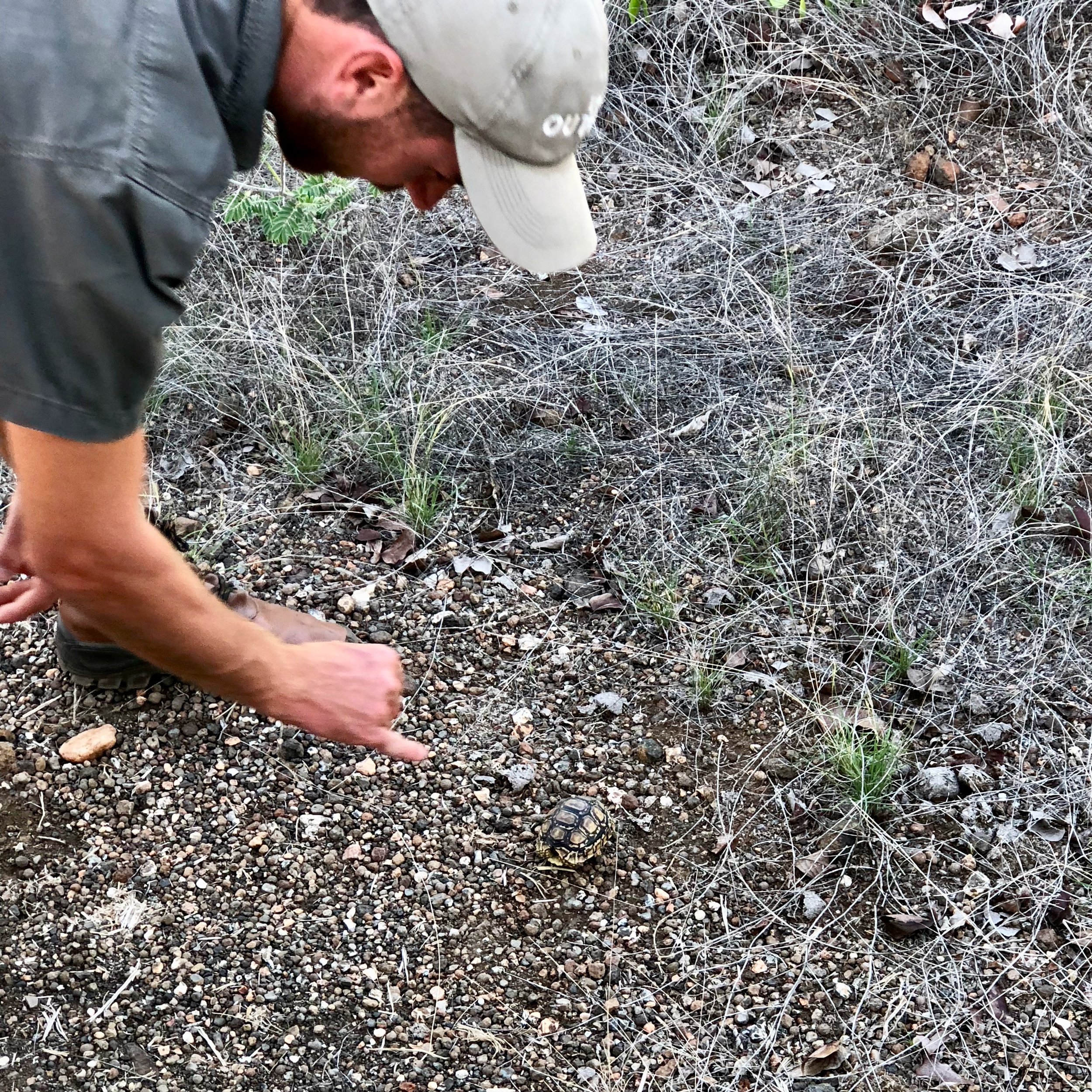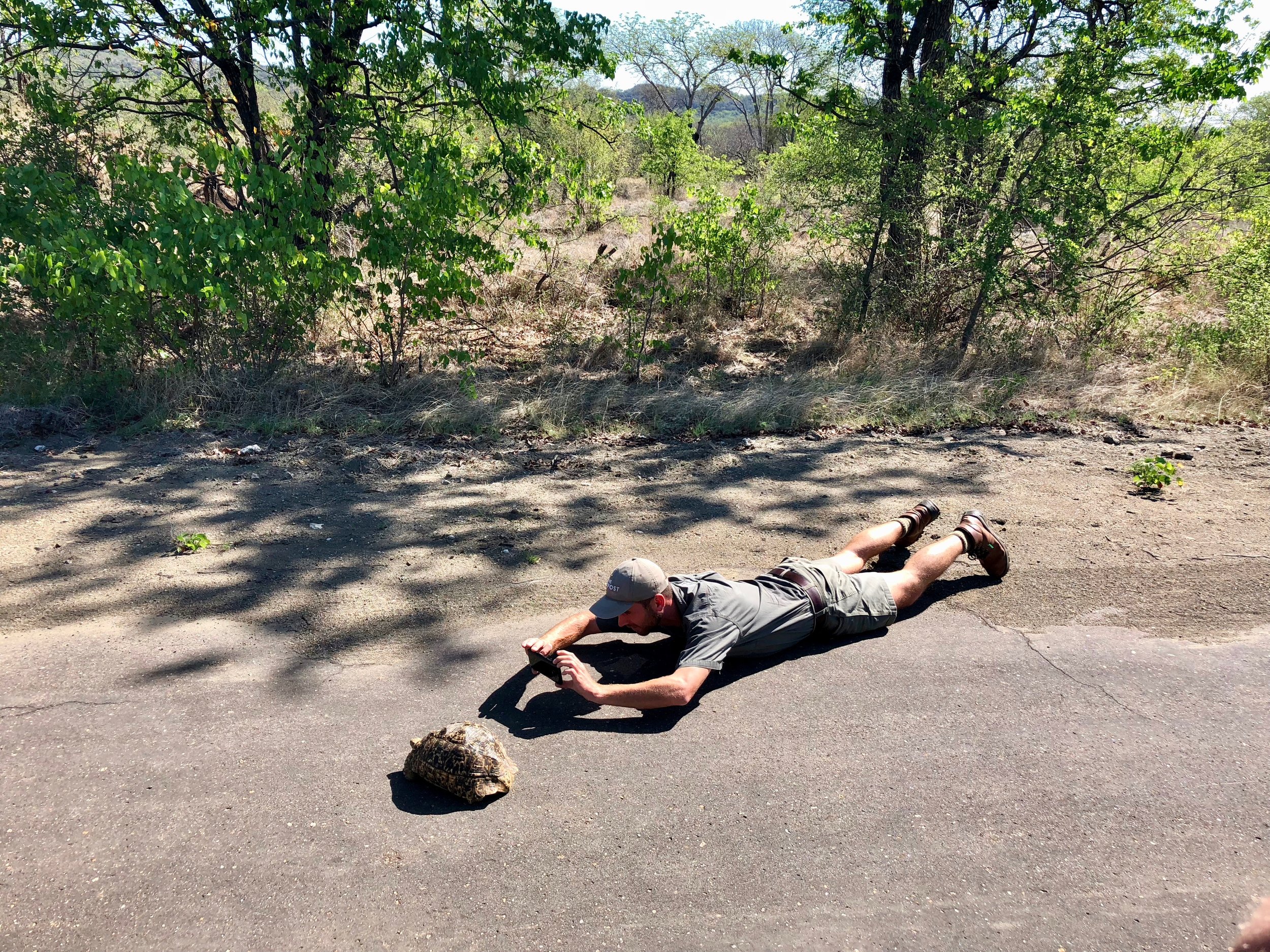Dean Oelofse is our Head Guide at The Outpost, in the far north of the Kruger National Park. Whether he’s getting up close and personal with an elephant or simply sharing his vast expertise with guests, a day in his life almost always promises a good dose of excitement and unpredictability. Here he shares an insight into what dawn to dusk can look like when living and working in this beautifully wild part of the world.
As the early morning calls of the notorious spotted hyena clans stir in my subconscious, my internal clock awakens too – it’s time for a new and exciting day in the African bush. The routine loud and raucous calls of spurfowl and francolin that soon follow confirm that, indeed, it’s time to get ready to go – the mighty African sun will soon be radiating down upon us.
As I walk out, I am greeted by a sky filled with the last remnants of the majestic constellations that light up the night, the enormity of it all intensifies my excitement for the day ahead. The ancient baobab tree outside our village stands proud and tall but time for marvelling is yet to come as lots of preparation lies ahead. Our game viewing vehicles are of utmost importance, daily checks and maintenance needs to be done first to ensure that these work horses run smoothly. Equipment needs to be packed – rifles, medical kits, and food and drinks for the day – and of course, coffee and some good morning banter with the team is essential, too.
As the horizon to the east starts to glow, a territorial male baboon gives a loud bark in the distant gorge and the sound radiates across the valley and, if our guests were not awakened by that, they will soon be as it is time to wake everyone up with a light knock on the door. In the bush there is no time for alarms, we move as the sun moves. After some muffled responses and some silent giggles, another cup of coffee is in order.
As we drive out into the crisp morning air, the sounds and smells of the bush truly awaken your senses. A bright blue flash flies overhead and lands a few meters from the road and we admire a lilac-breasted roller, and suddenly to the left there is an enormous crack that is followed by more branches breaking. We sit and listen for a minute until a set of intimidating white tusks begin to emerge from the bush, a heavy-set elephant bull walks into the road and blocks our initial route – nothing like a little early morning traffic! The big guy turns to give us a look, a gasp from the back and everyone holds their breath… he decides us uninteresting and rather moves over to a medium-sized mopane tree and, with the least amount of effort, pushes the tree over right in the middle of the road. He decides to snack on two of the smaller branches for breakfast and soon moves off. After hacking away at the fallen tree and clearing our route, we set off again to the area where we will be conducting our walking safari.
After important safety briefings and checks, the rifles are loaded and we head off on foot into a section of forest that runs along the mighty Limpopo River. Using the wind direction and the sun to our advantage so that the animals don’t pick up our scent, we weave our way through the fever trees and in the distance the hissing, crackling call of oxpeckers are heard. Excitement levels rise as these birds frequently indicate the presence of buffalo. We freeze for a moment longer and there it is, just faintly on the wind, a deep bellow…
There is indeed a herd of buffalo not too far west of our position, it sounds like they are in the direction of a big pan system that’s created when the river floods. They are most likely moving towards the water to have a drink as they are quite water-dependent animals. After scanning the surroundings and surveying the conditions, is it deemed ideal to follow-up on the signs of the herd. As we get closer, we hear more occasional grunts and we can actually start smelling that distinct buffalo odour. Using big trees as cover and crouching low down on the ground to minimise exposure, we approach towards an elevated ridge, close to where the herd is drinking. The wind direction is in our favour and the buffalo are so consumed by their thirst that they have no idea of our presence. The energy of the herd is electric and the sound of them in the water feels loud compared to the stillness of our surroundings. One bull lifts his head and scans the area – absolute stillness from the group! After a minute that seems like hours, he drops his head and continues drinking. What a moment!
Noon comes and the bush begins to slow down, as do we during some quiet time back at the lodge. However, just before the afternoon suns starts to burn orange, is time to head out again to admire the last rays of the day and enjoy the last of the diurnal activity before the creatures of the dark start to roam.








